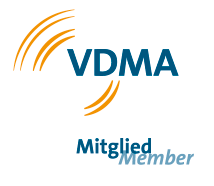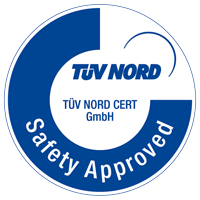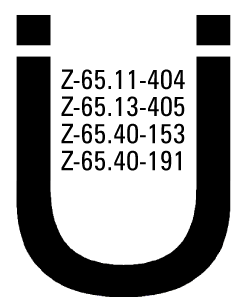Descripción del producto
El interruptor de nivel por vibración es un interruptor de nivel límite para líquidos de todo tipo y se utiliza en tanques, depósitos y tuberías.
Datos técnicos
Propiedades
- Clase de protección EN60529
- IP 65/IP 67
- Presión de funcionamiento
- ≤ 40 bar
- Densidad del medio
- ρ ≥ 0,7 g/cm³
- Viscosidad
- max. 10000 mm²s
- Corriente nominal
- < 15 mA
- Clase de protección
- III
- Salida
- PNP
- potencia
- kurzschlussfest, überlastsicher
- Visualización
- LED (grün, rot)
- Retardo de conmutación (tapa)
- ca. 0,5 s
- Retardo de conmutación (liberación)
- ca. 1 s
NSP-1-E
- Rosca de conexión
- G 1”
- Temperatura de funcionamiento
- –40...+150 °C
- Temperatura de almacenamiento
- –40...+85 °C
- Voltaje nominal
- 10...55 V DC (verpolsicher)
- Salida de corriente
- ≤ 350 mA
NSP-2-E
- Rosca de conexión
- G ½”
- Temperatura de funcionamiento
- –40...+100 °C
- Temperatura de almacenamiento
- –20...+70 °C
- Voltaje nominal
- 10...35 V DC (verpolsicher)
- Salida de corriente
- ≤ 250 mA
NSP-X-E Configurar
NSP - [ 1 ] - [ 2 ]
Más información del producto
Se emplea, por ejemplo, en sistemas de limpieza y filtración, en depósitos de refrigerante y lubricante como protección contra sobrellenado o protección de bombas.
Funciona en condiciones en las que otros principios de medición no son adecuados debido a la conductividad, acumulaciones, turbulencias, corrientes o burbujas de aire.
El modelo NSP-1-E / NSP-2-E puede instalarse en cualquier posición dentro de un depósito o tubería. La formación de espuma no afecta a su funcionamiento.
Es adecuado para cualquier líquido que pueda escurrir de la horquilla del dispositivo, permitiendo que esta vibre libremente. También puede usarse con líquidos que contengan sólidos con un tamaño inferior a 5 mm.
La horquilla vibratoria se activa mediante piezoelectricidad. En aire, oscila a su frecuencia de resonancia. El contacto con el líquido altera las vibraciones.
Este cambio se analiza electrónicamente y se convierte en una señal de conmutación.
Interruptor de nivel por vibración para líquidos
- Horquilla: acero inoxidable
- Carcasa: acero inoxidable
Prueba de funcionamiento
Puede realizarse en el dispositivo instalado mediante un imán de prueba (accesorio). Esto permite verificar el correcto funcionamiento de sistemas de control como autómatas (PLC) o sistemas de supervisión sin desmontar el equipo y sin contacto con líquidos.














